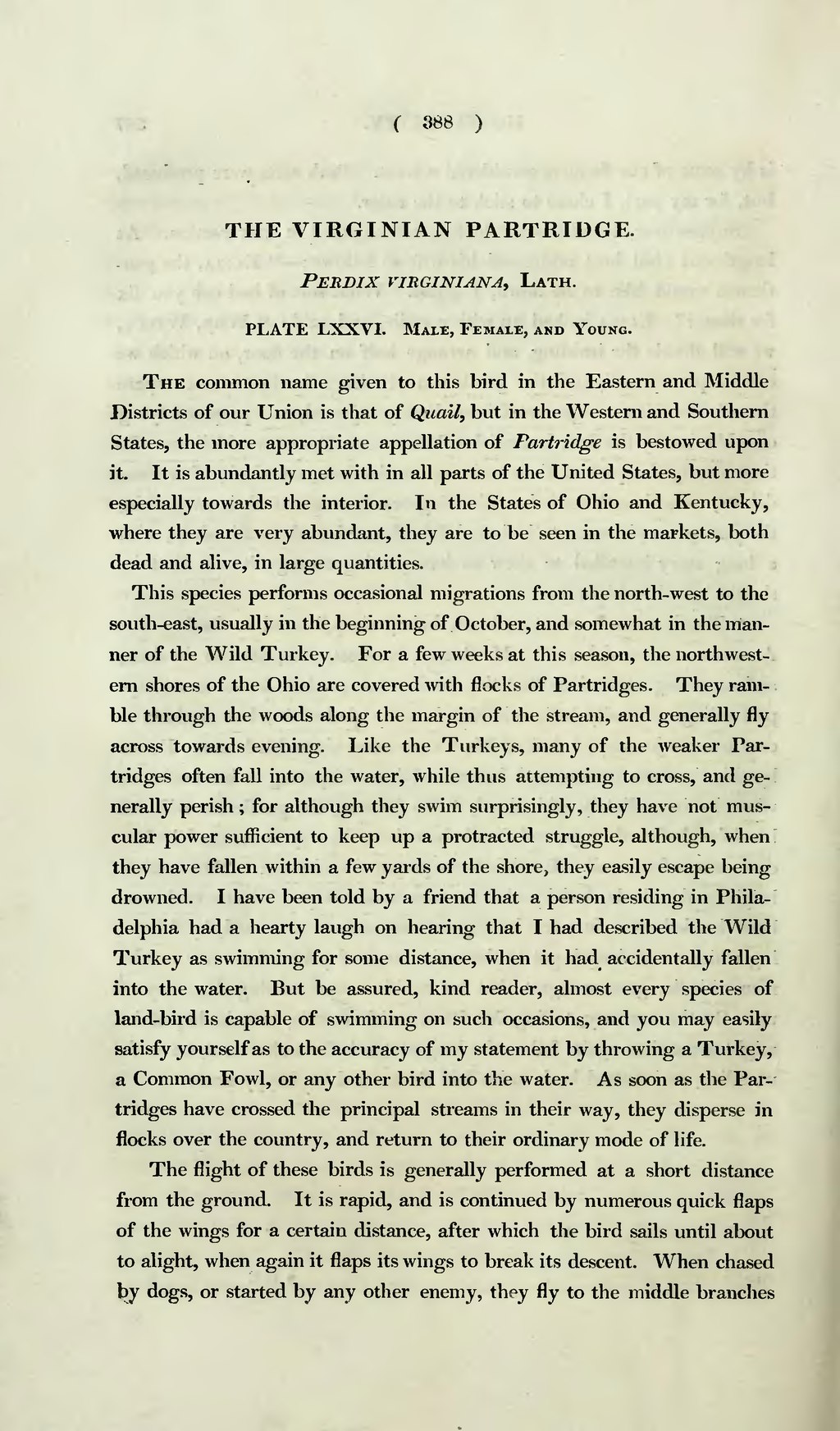( 388 )
THE VIRGINIAN PARTRIDGE.
perdix virginiana, Lath.
PLATE LXXVI. Male, Female, and Young.
The common name given to this bird in the Eastern and Middle Districts of our Union is that of Quail, but in the Western and Southern States, the more appropriate appellation of Partridge is bestowed upon it. It is abundantly met with in all parts of the United States, but more especially towards the interior. In the States of Ohio and Kentucky, where they are very abundant, they are to be seen in the markets, both dead and alive, in large quantities.
This species performs occasional migrations from the north-west to the south-east, usually in the beginning of October, and somewhat in the manner of the Wild Turkey. For a few weeks at this season, the northwestern shores of the Ohio are covered with flocks of Partridges. They ramble through the woods along the margin of the stream, and generally fly across towards evening. Like the Turkeys, many of the weaker Partridges often fall into the water, while thus attempting to cross, and generally perish; for although they swim surprisingly, they have not muscular power sufficient to keep up a protracted struggle, although, when they have fallen within a few yards of the shore, they easily escape being drowned. I have been told by a friend that a person residing in Philadelphia had a hearty laugh on hearing that I had described the Wild Turkey as swimming for some distance, when it had accidentally fallen into the water. But be assured, kind reader, almost every species of land-bird is capable of swimming on such occasions, and you may easily satisfy yourself as to the accuracy of my statement by throwing a Turkey, a Common Fowl, or any other bird into the water. As soon as the Partridges have crossed the principal streams in their way, they disperse in flocks over the country, and return to their ordinary mode of life.
The flight of these birds is generally performed at a short distance from the ground. It is rapid, and is continued by numerous quick flaps of the wings for a certain distance, after which the bird sails until about to alight, when again it flaps its wings to break its descent. When chased by dogs, or started by any other enemy, they fly to the middle branches
